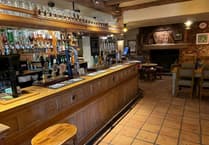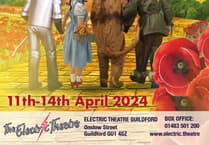A ROPLEY man is celebrating this week following a High Court case which looks to have secured the unexpected recovery of a family heirloom.
Michael Clarke-Jervoise has been allowed to keep a 17th century Dutch masterpiece, stolen from him in 1994, even though he has already received compensation for the loss.
According to Mr Clarke-Jervoise, the painting, which has been in his family since 1840 and a Òmuch loved heirloomÓ, was stolen eight years ago from a property in North East Hampshire.
At the time the painting, by celebrated artist Aelbert Cuyp, was valued at £150,000.
Following the burglary, the court heard that Mr Clarke-Jervoise did not receive a penny in insurance because the alarm system, installed and operated by Chubb Electronic Security Ltd, was not working properly, rendering his policy invalid.
In 1995 Mr Clarke-Jervoise is said to have reached an out-of-court settlement with Chubb Electronic Security for £125,000, plus £60,000 costs.
Having thought the masterpiece was lost forever, Mr Clarke-Jervois told The Herald on Wednesday of his delight, earlier this year, in receiving a call from London CID informing him that the Cuyp had been brought into SothebyÕs for valuation.
According to Mr Clarke-Jervoise, the would-be vendor was known to the police and was arrested but later released when the Crown Prosecution Service was forced to drop the charges.
In the event, a £11,500 settlement was reached with the vendor and Mr Clarke-Jervoise once again declared the owner.
The painting, however, was impounded pending TuesdayÕs hearing brought by Chubb who were claiming that, since they had paid compensation at the time of the burglary they should be entitled to the painting.
Yet on Tuesday, LondonÕs High Court Judge David Phillips QC ruled Mr Clarke-Jervoise could keep the money and have the painting, which features a shepherd with his dog and flock currently being held by SothebyÕs.
Earlier the judge had been told by Owen Rhys, for Chubb, that Mr Clarke-Jervoise was benefiting from Òdouble recoveryÓ and Òunjust enrichmentÓ.
He argued it was an Òimplied termÓ of the 1995 compensation settlement that Chubb should have the painting if it was recovered.
The barrister added the settlement had now been ÒsubvertedÓ by developments and justice would not be met if Chubb - an Òinnocent third partyÓ - lost out.
Grahame Aldous, for Mr Clarke-Jervoise, argued Chubb had no right to the painting because the out-of-court settlement was Òfull and finalÓ even though Chubb had admitted no liability. He added, Chubb had suffered no more than the Òluck of the drawÓ.
He also pointed out that Mr Clarke-Jervoise would not be entitled to more compensation had the painting gone undetected at SothebyÕs and subsequently sold for £4 million at auction.
Handing victory to Mr Clarke-Jervoise, Judge Phillips said: ÒI cannot accept that the purpose of the compromise has now been subverted by discovery and recovery of the lost painting.Ó
He ruled, Òwith some reluctanceÓ, that there was no Òimplied termÓ in the compromise settlement which gave Chubb a right to the painting.
Mr Clarke-Jervoise is now entitled to the paintingÕs immediate return.
It was painted in the mid 1600s by Cuyp, whose work hangs in Trafalgar SquareÕs National Gallery. Based on the Italian landscape style of the time, CuypÕs work was famed for its rich atmospheric light.
After marrying a wealthy widow of a count, Cuyp, whose uncle and father were also famous painters, hardly picked up a brush from 1658 onwards.
Chubb, who were ordered to pay Mr Clarke-JervoiseÕs legal costs of £42,000, were granted permission to appeal against the judgeÕs ruling.
While Mr Clarke-Jervoise is now waiting on any appeal court hearing, he is relieved to have recovered the painting which, he points out, will not be coming back to his Ropley home.



